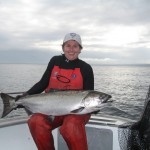Category: Blog1
In the past weeks, I’ve blogged about how overwhelming social-media (SM) can be. Build a platform; get your name out there; attract a following. As if writing isn’t time-consuming enough, there’s marketing to do. (F. Scott Fitzgerald partied; Hemingway fished; Joyce…well, never mind; I tweet. Something’s wrong with this picture.)
I use two tools to simplify my social media management, and am adding a third to writing management this month. Other tools exist, and I’d recommend investing a few hours to discover what will help you contain your SM animal. Then go write!
BITLY—This website shrinks a twitter-limit-busting link to the point I can actually say a few words about its content, with a couple of spaces left for it to be retweeted. https://bitly.com/shorten/

BUFFER—I just returned from a weekend with four octogenarians, my daughter-in-law (graduating law-school valedictorian) and son (graduating in the top ten in August—he “married up”). They are infinitely more important than my very-important writing endeavor. By parking tweets in buffer (you link a twitter and/or facebook account each time you log in), I didn’t think about losing momentum during a champagne toast. Buffer may be the single most important tool I’m using for SM. (It can be used with facebook, but I prefer facebook posts more in-the-moment, tailored to that particular medium with photos and such.) https://bufferapp.com/
SCRIVENER—This writing-management tool should be included. It organizes your thoughts and ideas for your manuscript, making a kind of electronic file so you can stay organized and retain threads and research that wander off (probably in search of chocolate and bandages if editing—see http://blog.nlbhorton.com/?p=498). I’m just beginning to learn how to use it, but think it’s going to work spectacularly well, and will eliminate the time I spend chasing down oddities I want to include, but can’t quite remember where I put them. http://www.literatureandlatte.com/scrivener.php
FACEBOOK’S DELAYED POSTS—Facebook enables an account to write a post, then schedule it for publication later. In the professional facebook page, click the clock icon in the bottom left corner, then add the date and time you want the post to appear. Even during the SECOND champagne toast, I didn’t think about SM because I scheduled a facebook post with photo for every day I was away. Regardless of my location, facebook and twitter carried on.
And of course, you can schedule WordPress blog posts to publish anytime—even now, as I sitting in my hermitage office, looking up a mountain valley, resuming the publishing fight.
I’m interested in any tricks of the SM trade you’ve discovered. Care to share?[subscribe2]
 I’m going back. Next March, after a too-short stop in Rome for manuscript two, I’ll be in Israel again for several weeks. Although manuscript one, partially set in Israel and Jordan, is complete, I need a larger photographic record for promotions. (That’s the official reason for the trip, anyway.)
I’m going back. Next March, after a too-short stop in Rome for manuscript two, I’ll be in Israel again for several weeks. Although manuscript one, partially set in Israel and Jordan, is complete, I need a larger photographic record for promotions. (That’s the official reason for the trip, anyway.)
The real reason is I knew I’d return the moment our plane’s wheels last left the tarmac at Ben Gurion Airport in Tel Aviv. It happens every time.
It’s been too long since I’ve marveled at Jerusalem’s ancient, pale limestone steps worn several inches shallow in the center by millions of footsteps over millennia. Stood atop the staircase at the end of Bab el-Silsileh Road gawking across the plaza at the Temple Mount, Al-Aqsa Mosque’s gold dome seizing my breath. Peered at the stump of Robinson’s Arch protruding from the southern Mount wall, and imagined the stoa (covered walkway connecting the city to the Mount in Herod’s time) once leaping from there. Worked the Mazar dig near Hezekiah’s Tunnel and the Silwan. I remember every spot clearly and precisely.
But the trip isn’t just about Jerusalem. Ceasarea, with wonderful submerged ruins, and Megiddo, where nations will gather at Armageddon, are on the docket. The Cliffs of Arbel, which I bravely (and loudly) descended above the Sea of Galilee; Jericho, which my heroine and her daughter diss en route under duress; and excavations in northern Israel, figuring in manuscript one. 
Masada, which I’ll ascend in a cable car, instead of reliving the cardiac-arrest-inducing footpath climb; Ein Gedi, where my characters re-esstablish relationships; and Qumran, where father and son finally realize differences can be strengths; and similarities, surprises.
I’ll photograph and write throughout this journey, hopefully posting when internet access is strong. Please begin praying now for safety and clarity. With luck and grace, I’ll keep my thumb from the lens, and my head down. La cheim! (To life!).
One of the toughest parts of social media is my intensely private, hermit self coexisting with the need to get my writing, and therefore Author self, “out there.” I must be two people: private me and public me. The duality creates a small schizophrenic problem.

The first hurdle is to realize authors ARE two different people. There’s mother/father/child—and Author. Sunday School teacher/mentor/friend—and Author. Wife/husband/other—and Author. Differentiate them in your mind to clearly position your Author self in the public eye. Separating them early eliminates confusion created by defaulting to too much private individual, and too little Author.
 I work in my office, mentally switching hats at my desk. If you allocate a space to your endeavor, one where you are Author only, there’s less chance of the rest of you spilling into your public self.
I work in my office, mentally switching hats at my desk. If you allocate a space to your endeavor, one where you are Author only, there’s less chance of the rest of you spilling into your public self.
 You might ask, what does she have to hide? She’s making such an effort to keep her personal life out of her work. The answer is nothing. But my world contains people who don’t want a public image and whose privacy I respect; involves daily tasks unrelated to this endeavor; is a haven from writing—one I hope to need when I make the NYTimes bestseller list. (As I’ve said, go big or go home.)
You might ask, what does she have to hide? She’s making such an effort to keep her personal life out of her work. The answer is nothing. But my world contains people who don’t want a public image and whose privacy I respect; involves daily tasks unrelated to this endeavor; is a haven from writing—one I hope to need when I make the NYTimes bestseller list. (As I’ve said, go big or go home.)
Not only is a physical spot where you are Author beneficial, you need an internet presence as Author as well. Do not mix public and private facebook and twitter pages. Unless you’re writing a cookbook, don’t habitually post recipes on your writing blog. And I reiterate nothing is erased in cyberspace: if you get tooted on your 50th birthday at a girls’ party, don’t post the photo of the Chippendale’s table dance. (Before you ask, no. The elegant dinner with Mr. Wonderful ended with a whopper pair of diamond earrings.)
Do tidbits about your private life humanize you, making you more interesting and engaging? Sure they do! I recently caught a 60-pound salmon in South America, and that monster’s photo on my Author facebook page generated dozens of “likes” from sportsmen. My Christmas biscotti recipe (the only one I’ve posted) generated new blog followers. But I carefully control personal posts so they don’t distract from my social-media mission: to build interest in my writing, land a publishing contract, then become a joyful voice for intelligent, Christian women globally.
I am mother, daughter, wife; friend, mentor, teacher; fly fisher, skeet shooter, gardener. I am Author.
My marketing (old career) mind pondered a question from a blog subscriber regarding building followers. The more I thought, the more convinced I became that order does matter because some platforms naturally feed others that don’t actively reciprocate.
 The NLBHorton platform started with facebook and twitter. These building tools weren’t genius or strategy; they appeared easier to implement well than a full-scale blog. Many elements of these two are tightly controlled, so development involved fewer choices that could (and should) be consistent across both—cover shot, and author bio and photo on facebook; background, and author bio and photo on twitter.
The NLBHorton platform started with facebook and twitter. These building tools weren’t genius or strategy; they appeared easier to implement well than a full-scale blog. Many elements of these two are tightly controlled, so development involved fewer choices that could (and should) be consistent across both—cover shot, and author bio and photo on facebook; background, and author bio and photo on twitter.
Developing a professional-looking blog requires more decisions, time, and effort (conquering WordPress, for instance). Followers must find a blog, whereas twitter requires little more than sitting at a computer watching posts scroll. Facebook is a little more work for your following than twitter, but linking facebook and twitter accounts make them interact: if someone sees one, they are led to the other. (I recommend a professional facebook author page instead of using a personal one; remember, you’re promoting your work. Few followers want to see photos of your 25th high-school reunion.)
And then there’s the website: the mother-ship, really. Embed your blog therein, post links to your site on facebook and twitter profiles, and present a comprehensive package that’s a one-stop waltz through your public platform. A beautiful website, one that moves readers toward your writing, is time-consuming to develop, and requires a lot of planning and thought. So your first good shots out should be facebook and twitter, followed by website with blog. You’ll also see what works on facebook and twitter, enabling you to better target your website (which can be expensive to develop, so you want to do it once).
It’s easy to become overwhelmed by social media, but easier than you think to build and control. I’ve just crested an aggregate of 10,000 followers in about six months (without a product). While managing the public image is a little time-consuming, tools like BUFFER (https://bufferapp.com/) automate posting and make it doable.
With planning, consistency, and thought, you can create the impact today’s publishers require—and enjoy the process as well by interacting (VERY important) with those interested in your thoughts and ideas. Twitter…facebook…website…blog. You can do this.[subscribe2]
You’ve researched, pondered, written, and spell-checked. You’re ready for a professional edit. (I’d suggest reaching for bandages, antibacterial cream, and chocolate now.)
 If you’re seriously trying to get published, you already know the odds (less than one percent for an unpublished author). Everything has to be perfect; stars must align; God must smile on your face. And you must be lucky, or a well-publicized ax murderer with a story to tell. Assuming you’re not on death row, you pay your dues after doing your best—and that means a professional edit.
If you’re seriously trying to get published, you already know the odds (less than one percent for an unpublished author). Everything has to be perfect; stars must align; God must smile on your face. And you must be lucky, or a well-publicized ax murderer with a story to tell. Assuming you’re not on death row, you pay your dues after doing your best—and that means a professional edit.
I found my first manuscript’s editor through a writers’ association. My second was recommended by my literary agent. I was accustomed to taking direction from clients and remembered brutal edits in Journalism 101 class, but nothing prepared me for the electronic file I opened one summer evening in Germany.
The entire right column—the comments field—was crimson. The attack extended BELOW the page, corrections, re-directions and questions dripping from the edge like a hemorrhaging wound. Her work eviscerated 85,000 words. So I did what any adult would do in this situation: laughed while reaching for an almond-studded Toblerone bar.
The visual impact staggered me. Creating the document was tough, but how was I going to conquer 250 double-spaced screens of literary gore? The answer was one screen at a time.
About twenty screens into the carnage, a pattern emerged. Then I discovered mistakes: syntax, redundancy, logic flaws—mind you, this document made it to the top level of a Big Six, so it wasn’t garbage—bringing Journalism 101 lessons to the surface of my work. Halfway through, I started anticipating comments. By the end of the document, I believed my editor was the most brillant person on earth.
The process was an epiphany. It hurt. It was a vast, hard work. But I LEARNED SO MUCH from her expertise, seeing my document through another set of qualified eyes.
My second manuscript is queued up for July edit, and I’m expecting a scarlet August. But the professional edit is some of the best money I’ve spent during my publishing journey, and I’d advise you budget for one. (Just remember funds for Mr. Hershey.)[subscribe2]








